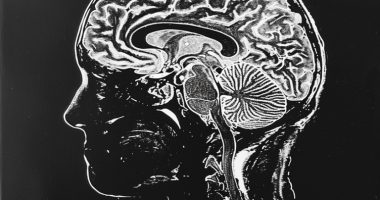Uterine prolapse
What is it?
Uterine prolapse is a variant of pelvic floor dysfunction. Every third patient faces this condition, which in half of cases is accompanied by urinary incontinence. Not only women who have given birth but also young girls can get acquainted with uterine prolapse since the cause of the development of this condition may be the peculiarities of connective tissue. Often, the realization of this predisposition is facilitated by trauma to the pelvic floor muscles (childbirth, heavy physical exertion, constipation).
About the disease
In the initial stages of uterine prolapse, there are no symptoms. Nonspecific manifestations are noted in the progression of the disease. Diagnosis of this condition is not difficult. The objectives of the examination are to establish the fact of prolapse, determine the degree of prolapse, and determine the existing disorders of the bladder, genitals, and rectum.
Gynecologists, with the participation of other specialists (endocrinologists, surgeons, neurologists, etc.), are engaged in the study of symptoms, identification of causes, treatment, prevention, and prevention of the consequences of uterine prolapse in women.
Treatment is complex and multi-component. It is aimed at “pumping” and strengthening the pelvic floor muscles. In the presence of a significant prolapse, the first stage, in most cases, is surgery, after which a group of special exercises to train muscle structures is selected.
Types and stages of uterine prolapse
Taking into account the amount of pathology, uterine prolapse can be of two types: complete, when the uterus is almost entirely outside the vulvar ring, and incomplete when the uterus does not go beyond the boundaries of the vulvar ring.
There is a more detailed classification of symptoms of cervical and uterine wall prolapse by degrees, which is used by urogynecologists:
- stage one – the most protruding part of the prolapsed vaginal walls stands 1 cm or more above the hymen (hymen);
- second stage – the prolapse is less than 1 cm close to the hymen or even extends beyond it, but not more than 1 cm;
- third stage – the most protruding part of the prolapsed walls is more than 1 cm from the hymenal ring;
- The fourth stage is complete prolapse, when the uterus prolapses beyond the vulva.
Depending on the localization of wall prolapse, 2 forms are distinguished:
- Cystocele – anterior wall bulge (often combined with urinary incontinence);
- rectocele – the posterior wall is predominantly bulging (usually blended with constipation and rarely with gas incontinence).
There is also a mixed type where both the front and back walls of the vagina bulge equally.
Symptoms of uterine prolapse
There may be no apparent signs of displacement at the initial stages of pathology development. In such situations, the disease is often detected accidentally during a preventive examination or examination for other genitourinary problems.
Probable symptoms of uterine prolapse may include:
- the sensation of a foreign body in the vagina;
- false urges to urinate;
- Inability to hold urine when laughing, coughing, sneezing, jumping, etc;
- urinary incontinence with the spontaneous urge to urinate;
- a feeling of incomplete emptying of the bladder;
- discomfort and dull pain in the lower abdomen and perineum;
- pain during intercourse;
- sexual dysfunction (loss of vaginal sensation);
- vaginal gaping;
- frequent inflammation of the urethra and bladder.
In most cases, signs of uterine prolapse appear in older women, which, in addition to childbirth, is due to age-related changes in connective tissues.
At later stages of the disease, patients note the presence of significant prolapse of the vaginal walls, and in severe cases, the uterus falls out ultimately. Due to constant mechanical friction, the mucosa is damaged, and opportunistic microorganisms are activated, leading to inflammation. So decubital ulcers are formed, which do not heal for a long time. Only complex medical treatment prescribed by a gynecologist helps to cope with this problem.
Causes of uterine prolapse
The pathology is caused by several predisposing and provoking factors that can occur in isolation and combination. The most common predisposing causes of uterine prolapse are:
- age-related decrease in elasticity of ligamentous structures;
- the birth of large children;
- trauma to the pelvic floor during labor;
- hereditary features of connective tissue (in particular dysplasia);
- an excessive increase in intra-abdominal pressure accompanies heavy physical exertion.
Provoking factors may also include:
- overweight;
- sedentary, sedentary lifestyle;
- smoking;
- a persistent cough.
As a rule, prolapse develops as a result of overlapping predisposing (e.g., aggravated heredity) and provoking (increased intra-abdominal pressure, perineal trauma) factors. During menopause, when estrogen levels drop critically, progression of uterine prolapse is not uncommon.
Diagnosis of uterine prolapse
Determining the presence and degree of pathology is relatively easy for a qualified gynecologist. During the visual examination, the doctor asks the patient to push to assess how severe the prolapse is. Push with a full bladder causes the release of drops of urine, which is the first evidence of stress incontinence.
The following diagnostic tests are used to determine the amount of impairment present:
- Keeping urinary diaries (the woman fills out particular forms indicating the time and circumstances of urination and the amount of urine excreted);
- Comprehensive urodynamic study – allows to assess at what level there are disorders of the act of urination, i.e., the bladder or urethral segment is the cause;
- A general clinical examination of urine is necessary to exclude inflammatory changes that may manifest similar symptoms to pelvic organ prolapse.
- cystoscopy – examination of the bladder mucosa from the inside using endoscopic equipment;
- ultrasound scanning of the pelvic organs, bladder and urethra, and pelvic floor;
- vaginal tonometry – allows to assess the contractility of the pelvic floor muscles, which is essential for the selection of treatment methods;
- radiographic examination.
Other specialists, such as endocrinologists, cardiologists, surgeons, etc., may also be involved in the diagnosis if necessary.
Treatment of uterine prolapse in women
Depending on the features, volume, pathology localization, the patient’s age, and the presence of other diseases, doctors select the optimal scheme of therapeutic or surgical techniques.
Conservative tactics
This approach in treating uterine prolapse is chosen if the degree of pathology allows for avoiding cardinal measures. The therapy complex includes methods aimed at the general strengthening of muscle fibers and ligamentous structures of the pelvic floor, as well as measures to improve the patient’s quality of life.
- Training of the pelvic floor muscles, for example, Kegel exercises.
- Laser treatment. Particular lasers help strengthen the pelvic floor muscles, reduce urinary incontinence, and smooth out atrophy of the genitourinary mucosa. The laser beam shortens the cross-links between collagen molecules, contributing to strengthening. At the same time, the renewal processes of existing collagen fibers are triggered, and the synthesis of new cells is activated.
- Vaginal balls and cones. The essence of the method is to hold weights of different weights in the vagina, which in turn helps to ensure a prolonged tonic tension of the pelvic floor muscles. Vaginal muscles react to the presence of a foreign body with a specific weight by a contraction reflex.
- Drug therapy. For menopausal women, topical forms of estrogen are recommended to improve pelvic floor health. For urinary incontinence, symptomatic medication is selected based on the type (stress, urgency, or mixed incontinence).
- Pessaries. The gynecologist makes an individual selection of the silicone pessary (sets the right size and type), then teaches the patient how to insert and remove it correctly.
Surgical intervention is indicated in the absence of proper effect from conservative tactics and in the case of neglected forms of pathology.
Surgical treatment of uterine prolapse
Surgical treatment methods allow the elimination of pronounced forms of uterine prolapse. However, after surgery, there is a risk of recurrence, so after the elimination of pathology, each patient is prescribed a set of exercises to strengthen the ligamentous and muscular structures of the pelvic floor.
The extent of surgery may vary depending on the severity of the disease and the clinical situation. In most cases, a vaginal levatorplasty is performed, i.e., stitching of the pelvic floor muscles; in cases of urinary incontinence, a synthetic support mesh may be required. In the case of uterine pathologies in women who have already gave birth, hysterectomy (removal of the uterus) may also be performed.
All these treatment options are available in more than 730 hospitals worldwide (https://doctor.global/results/diseases/uterine-prolapse). For example, laparoscopy-assisted supracervical hysterectomy (LASH) can be done in 25 clinics across Turkey for an approximate price of $3.2 K(https://doctor.global/results/asia/turkey/all-cities/all-specializations/procedures/laparoscopy-assisted-supracervical-hysterectomy-lash).
Rehabilitation
After the operation, the patient spends several days in hospital. Discharge from the hospital is performed on the 2-3 day after the operation.
The gynecologist recommends a dosed activity regimen. After vaginal surgery, a urethral catheter may be inserted into the bladder for 1-2 days. Full recovery lasts 3-4 weeks.
After discharge at home for 1-1.5 months, a woman should avoid physical activity and sexual contact. Training of pelvic floor muscles should begin after the complete healing of tissues. The doctor determines the exact terms of rehabilitation after a control examination.
Prevention
Preventive measures consist of timely training of the pelvic floor muscles in any way: Kegel exercises, vaginal balls, cones, and special simulators (the latest generation of such simulators synchronizes with a smartphone and allows you to adjust the correct force of compressions). In addition, it is important to avoid birth traumas and to choose an excellent birthing clinic where doctors can fully restore the anatomy of the pelvic floor in case of ruptures.
It is also essential to stop smoking, watch your weight and proper diet, and give your body regular physical activity, especially if you have sedentary lifestyle.


